Climate Warming Unlikely to Cause Near-Term Extinction of Amazon Tree Species
New genetic analyses of common Amazon trees show that many have survived past warming
December 13, 2012
New genetic analyses show that some common Amazon tree species are more than 8 million years old.
The
analysis also reveals that these surprisingly old species have endured
past periods of significant climate warming. It therefore appears
unlikely that human-caused temperature increases alone will cause mass
extinctions of the trees in the coming century.
Results of a study
by evolutionary biologist Christopher Dick of the University of
Michigan and colleagues show that some trees in the Amazon rainforest
have survived warm periods similar to the global warming scenarios
forecast for the year 2100.
"In the absence of other major
environmental changes, near-term high-temperature-induced mass species
extinction is unlikely" in the Amazon forest, Dick and colleagues
conclude in a paper published online today in the journal Ecology and Evolution.
"The
rapidly changing climate of our planet has the potential to put great
stresses on plants and animals," said Sam Scheiner, program director in
the National Science Foundation's (NSF) Division of Environmental
Biology, which funded the research.
"To prepare for these changes,
we need to know how species have adapted to past climate change,"
Scheiner said. "Much more is left to be learned about the effects of
climate change."
The new results are at odds with earlier findings
based on ecological niche-modeling scenarios that predict tree species
extinctions in response to relatively small increases in global average
air temperatures.
Dick used a molecular clock approach to determine the ages of 12 widespread Amazon tree species.
Then
he and other scientists looked at climate events that have occurred
since those tree species emerged. In general, the older the tree
species, the warmer the climate it has previously survived.
The
researchers determined that nine of the tree species have been around
for at least 2.6 million years, seven have been present for at least 5.6
million years and three have existed in the Amazon for more than eight
million years.
"These are surprisingly old ages," Dick said.
"Previous studies have suggested that a majority of Amazon tree species
may have originated during the Quaternary Period, from 2.6 million years
ago to the present."
"The most lasting finding of our study may
be the discovery of ancient geographic variation within widespread
species, indicating that many rainforest tree species were widely
distributed before the major uplift of the northern Andes," said paper
co-author Eldredge Bermingham of the Smithsonian Tropical Research
Institute.
Air temperatures across Amazonia in the early Pliocene
Epoch--3.6 million to 5 million years ago--were similar to
Intergovernmental Panel on Climate Change (IPCC) projections for the
region in 2100 using moderate carbon-emission scenarios.
Air
temperatures 5.3 to 11.5 million years ago in the late Miocene Epoch
were about the same as IPCC projections for the region in 2100 using the
highest carbon-emission scenarios.
"Our results provide evidence
that common Neotropical tree species endured climates warmer than the
present, implying they can tolerate near-term future warming under
climate change," said Dick.
Paper co-author Simon Lewis of
University College London and the University of Leeds cautioned that the
good news for Amazon trees is not a panacea.
"The past cannot be compared directly with the future," he said.
"While
tree species seem likely to tolerate higher air temperatures than
today, the Amazon forest is being converted for agriculture and mining,
and what remains is being fragmented by roads and fields.
"Species
will not move as freely in the Amazon as they did in previous warm
periods, when there was no human influence. Today's climate change is
extremely fast, making comparisons with the past difficult."
The 12 tree species used in the study are broadly representative of the Amazon tree flora.
Primary
forest collection sites were in central Panama, western Ecuador and
Amazonian Ecuador. Additional collections were in Brazil, Peru, French
Guiana and Bolivia.
Other plant samples were obtained from herbarium specimens.
To
determine the age of each tree species, the researchers extracted and
sequenced DNA from plant samples, then looked at the number of genetic
mutations contained in those sequences.
Using a molecular clock
approach and population genetic models, they estimated how long it would
take for each of the tree populations to accumulate the observed number
of mutations, which provided a minimum age for each species.
Tropical rainforests have existed in South America for at least 55 million years.
The
future of the contemporary Amazon forest is uncertain, however, as the
region is entering conditions with no past analog, combining rapidly
increasing air temperatures, high atmospheric carbon dioxide
concentrations, possible extreme droughts and extensive removal and
modification of the forest by humans.
The findings imply that
droughts, direct human effects and their interactions "may be more
immediate threats to the integrity of Amazon rainforests, and should
remain a focus of conservation policy," the authors conclude.
"An
important caveat is that because we've been in a cold period over the
past 2 million years--basically the whole Quaternary Period--some of the
trees' adaptations to warmth tolerance may have been lost," Dick said.
In addition to Dick, Bermingham and Lewis, Mark Maslin of University College London is a co-author of the paper.
Additional
support for the research was provided by the Smithsonian Tropical
Research Institute, the University of Michigan and the Royal Society.
-NSF-
Media Contacts
Cheryl Dybas, NSF (703) 292-7734 cdybas@nsf.gov
Jim Erickson, University of Michigan (734) 647-1842 ericksn@umich.edu
The National Science Foundation (NSF) is an independent federal
agency that supports fundamental research and education across all
fields of science and engineering. In fiscal year (FY) 2012, its budget
is $7.0 billion. NSF funds reach all 50 states through grants to nearly
2,000 colleges, universities and other institutions. Each year, NSF
receives over 50,000 competitive requests for funding, and makes about
11,000 new funding awards. NSF also awards nearly $420 million in
professional and service contracts yearly.
Useful NSF Web Sites:
NSF Home Page: http://www.nsf.gov NSF News: http://www.nsf.gov/news/ For the News Media: http://www.nsf.gov/news/newsroom.jsp Science and Engineering Statistics: http://www.nsf.gov/statistics/ Awards Searches: http://www.nsf.gov/awardsearch/ | 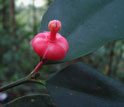 The scarlet flowers of Symphonia globulifera trees have existed in the Amazon for 15 million years. Credit and Larger Version  Isolated Amazon rainforest tree in a pasture at sunset. Credit and Larger Version 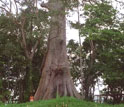 Giant kapok tree near the Amazon River; this species was the youngest in the study. Credit and Larger Version 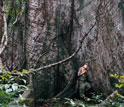 Close-up of a kapok tree; in the Amazon, the species is less than one million years old. Credit and Larger Version 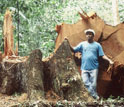 The felling of a mahogany tree is indicative of the challenges facing Amazon forests. Credit and Larger Version |
the National Science Foundation's (NSF)
Guillermo Gonzalo Sánchez Achutegui
ayabaca@gmail.com
ayabaca@hotmail.com
ayabaca@yahoo.com
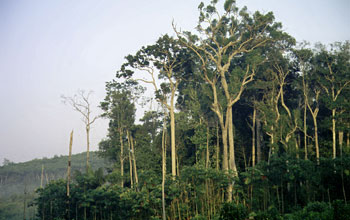
No hay comentarios:
Publicar un comentario